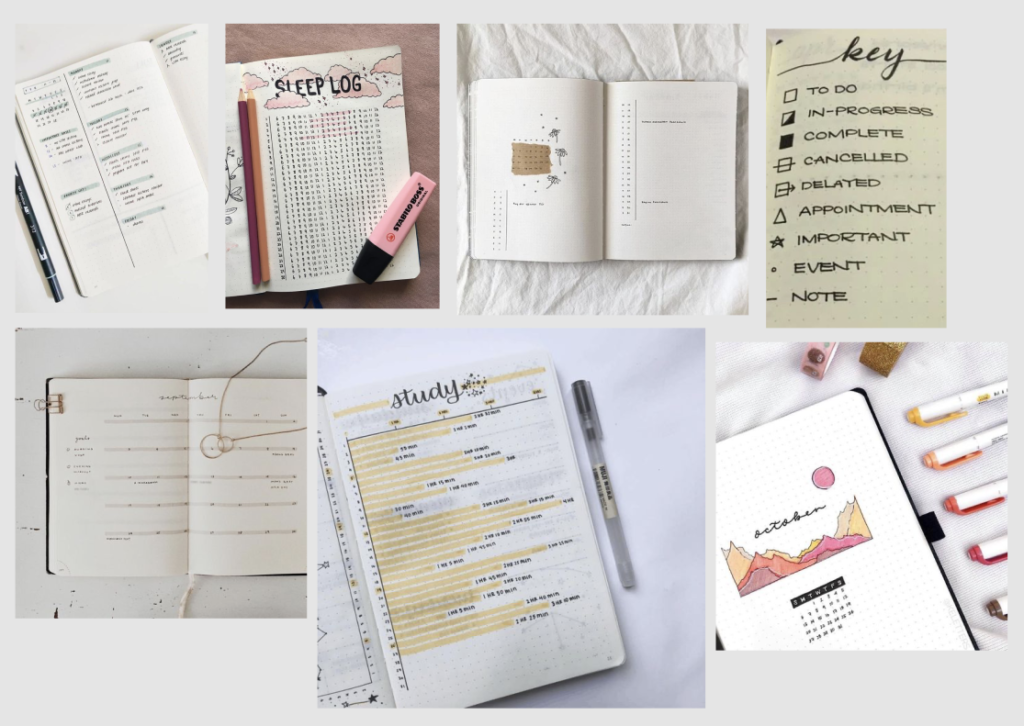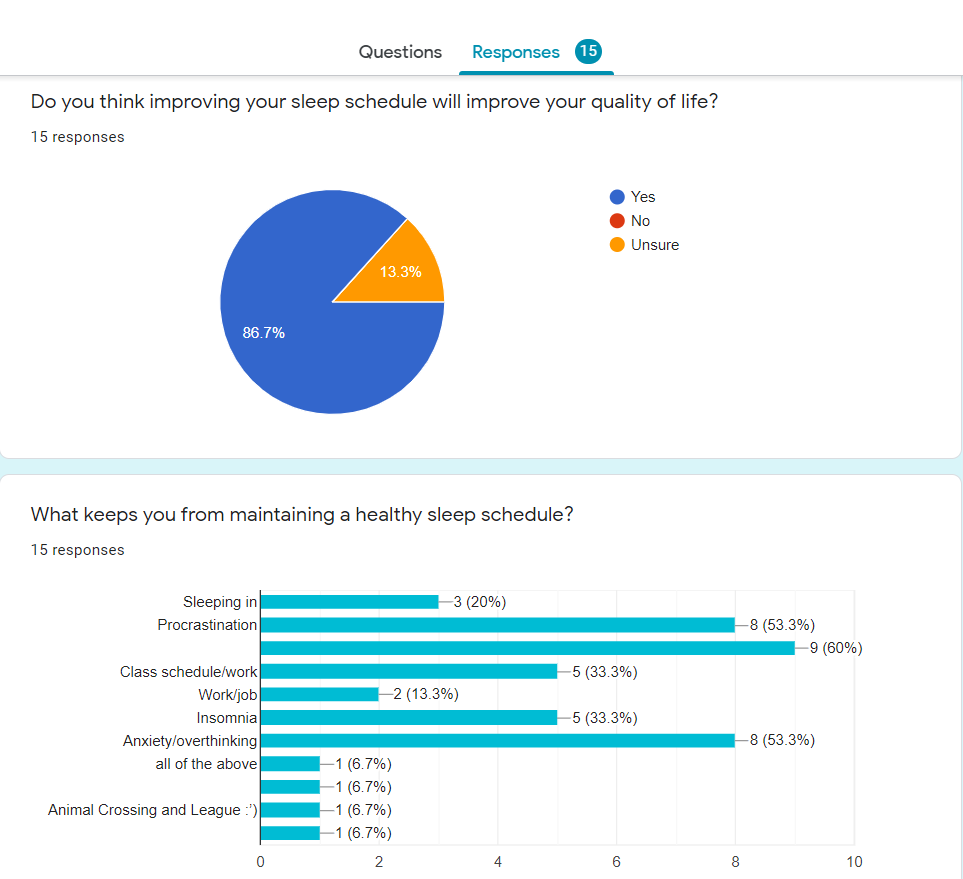Team 5: Hannah Cai, Julia Nishizaki, Cindy Zhang
Since we all struggle with getting enough sleep, we decided to research our current sleep schedules and to try to create an intervention that promotes healthier sleeping habits. We divided our project into three sections, each lasting about a week long: researching, prototyping, and testing.
Researching
We did three forms of research: a google survey about sleep in general, a week of recording our sleep data on a spreadsheet, and an in-depth interview/reflection about each others’ sleep habits.
Some key insights from the google survey:
- Over 50% of people said that they don’t have a healthy sleep schedule.
- 87% of people
- want to improve their sleep schedule through sleeping earlier, sleeping more, or waking earlier.
- believe that improving their sleep schedule will improve their quality of life.
- feel like they can control most of the things keeping them from maintaining a healthy sleep schedule.
- The top things keeping people from a healthy sleep schedule are procrastination/the urge to be productive late in the day, as well as anxiety/overthinking.
Going off of that, we wanted to explore what we usually do before sleeping, why we got up when we did each morning, naps, and if weather or caffeine affected our energy throughout the day. We each recorded these, as well as more general information such as sleeping and waking times, for a week. We generally found that weather and caffeine didn’t impact us much, and that we tend to either be working or stressing about work/procrastinating before we sleep. Also, most of us only nap if we didn’t get enough sleep the night before. While interviewing each other, we found that we all have inconsistent sleep schedules but want consistent ones, and that we feel like having some sort of consistent morning/night routines would help us with our sleep routine.
Based on our research, we decided to focus on routines; we felt that regular morning/night routines would help to promote people’s goals of falling asleep earlier and waking up earlier. Moreover, having a set night and morning routine could help people to plan out the rest of their day, reducing procrastination.
Prototyping




For our intervention, we designed a customizable monthly sleep plan, inspired by bullet journal aesthetics, that users would print and fill out. The sleep plan is split up into two sections: goals/routines and a sleep log. On the left side, the user writes in when they want to go to sleep and wake up, as well activities for their nighttime and morning routines, and when to do them by. On the right side, the user tracks their sleep schedule everyday in the sleep log. The sleep log covers a 24 hour period for each day, starting at 7pm on the previous night, and ending at 7pm on the current day. In order to help motivate the user to stick to their sleep schedule goals, we tried to use loss aversion bias. Users customize the printout by highlighting their ideal sleep schedule on the log, making users see how much sleep/time they’re losing when not sticking to their schedule. We each taped our sleep plans to the walls next to our beds to remind us to fill it out every morning and night, and to remind ourselves of the goals we set.

Testing
After we made our prototype, we each tried using it for about a week. Our rates of success varied. For Hannah, the intervention helped in general because it made her decide on and compare herself to an ideal. In the beginning of the week, she kept pretty well to her schedule and felt less tired during the day. However, due to increasing workload, she started slipping back into her regular sleep schedule (sleep late and wake late). Julia misjudged the timing/duration of her routines, so she didn’t find them that helpful. She also prioritized work over sleep, so she wasn’t that motivated to keep to her plan. Cindy moved in with her parents at the beginning of the week, so she followed the sleep schedule and most of her routines with the help of her mom, who turned off all the lights in the room by 11:30pm every night. However, towards the end of week, her mom and Cindy both had a lot of work, so they both slept at 2:00am. In conclusion, we all made an effort to follow our interventions, and were all motivated to an extent by it. Final week workload influenced all of us as well. We hope once the final week is over, we can keep using our intervention and improving our sleeping schedules.






